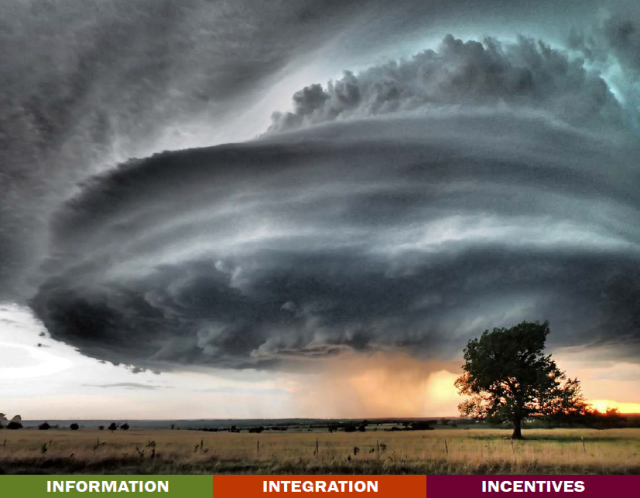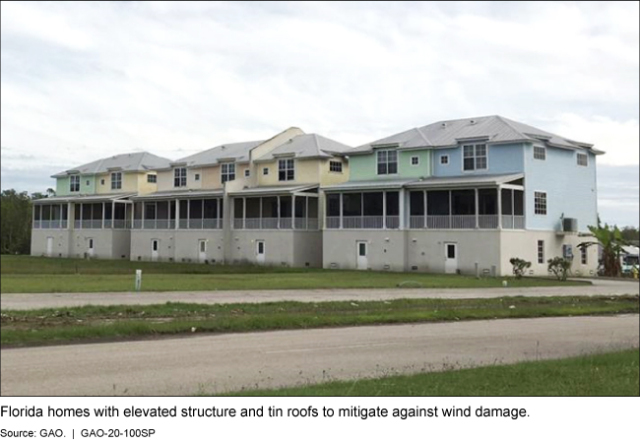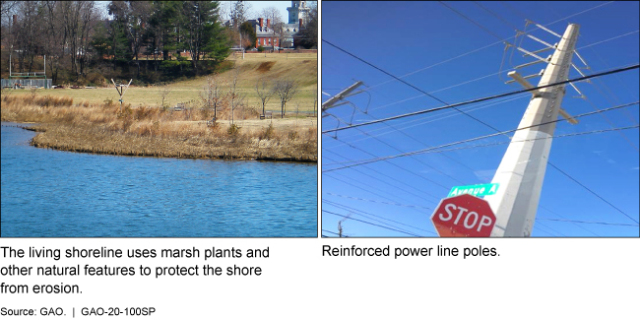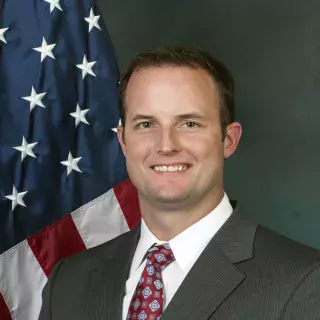Our New Disaster Resilience Framework
Since 2005, federal funding for disaster assistance is approaching half a trillion dollars, most recently for catastrophic hurricanes, flooding, wildfires, and other losses in 2017 and 2018. As the number and severity of weather events continues to increase, the need for federal assistance will likely increase as well.
With this in mind, we created the Disaster Resilience Framework to serve as a guide for analyzing federal actions to enhance disaster resilience and reduce federal fiscal exposure to disasters. Read on (and listen to our podcast with Chris Currie) to learn more about the Framework.
Increasing disaster resilience, one decision at a time
Investing in disaster resilience—i.e., the ability to prepare for, recover from, and adapt to disasters—can help limit damage and costs in the aftermath of a weather event. For example, elevating homes and strengthening building codes in Texas and Florida prevented greater damages during the 2017 hurricane season.
So, we created the Disaster Resilience Framework to help policymakers facilitate and promote disaster resilience throughout the nation—working with federal, state, local, and tribal governments as well as nongovernmental entities.
Framework components
The Framework lays out 3 broad overlapping principles to help guide federal disaster resilience efforts:
- Information: Accessing authoritative and understandable information can help decision makers identify current and future risks, as well as the impact of risk-reduction strategies
- Integration: Integrated analysis and planning can help decision makers take coherent and coordinated actions
- Incentives: Incentives can help make long-term, forward-looking, risk-reduction investments more viable and attractive
Each of these principles includes questions that people who oversee or manage such efforts can consider not just after disaster strikes, but also in anticipation of a potential disaster.
Users of the Framework can use its principles and questions to:
- Analyze the range of federal disaster resilience efforts, such as legislation, strategic plans, and programs
- Identify gaps in existing federal efforts
- Adapt the principles to the circumstances of the effort under consideration
- Consider the federal role amongst other decision makers, such as states, localities, and nongovernmental entities
Check out our Disaster Resilience Framework to learn more.
- Comments on GAO’s WatchBlog? Contact blog@gao.gov.
GAO Contacts
Related Products

GAO's mission is to provide Congress with fact-based, nonpartisan information that can help improve federal government performance and ensure accountability for the benefit of the American people. GAO launched its WatchBlog in January, 2014, as part of its continuing effort to reach its audiences—Congress and the American people—where they are currently looking for information.
The blog format allows GAO to provide a little more context about its work than it can offer on its other social media platforms. Posts will tie GAO work to current events and the news; show how GAO’s work is affecting agencies or legislation; highlight reports, testimonies, and issue areas where GAO does work; and provide information about GAO itself, among other things.
Please send any feedback on GAO's WatchBlog to blog@gao.gov.







